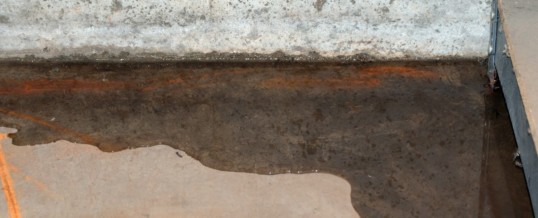
If your home has wet basement floors, that’s usually a sign of trouble.
Before you panic, it’s important to know what causes a wet basement and what you can do to fix it.
This handy guide will walk you through what you can do to make your basement a dry place again and ensure that your home has a good, solid foundation.
Recognize the Signs of a Wet Basement
It’s important to know exactly what you need to look for in order to determine if you have a moisture problem in the basement. Look for visible staining along the walls and floors that could be a sign of dampness coming through.
Sniff around and be aware of any musty or damp smells. Mold is definitely a red flag that you have a moisture issue and it can cause serious problems if you don’t get it remediated.
You may also see white spots or white lines throughout certain areas of your basement. This white marking is residue from salt deposits that come from the water that seeps through and dries.
Your basement may have surfaces that are peeling, flaking, or even popping off completely. Be cautious about any signs of damage since you’ll need to get it fixed right away.
In general, try to be vigilant when you’re looking for signs of possible moisture in the basement. The sooner you can pinpoint the source, the better the odds are that you can fix it.
Try Interior French Drains
If you’re concerned that you have wet basement floors or you just want to prevent it from happening altogether, interior French Drains catch the water that seeps inside and then channels it by gravity to send water back outside. This water goes into a drain line to keep your basement dry.
You can install interior French drains directly around the perimeter of the home. Many homeowners attempt to install French drains themselves, but it’s best to enlist the help of a professional waterproofing company to be sure it’s done right.
The waterproofing company will cut a channel around the basement perimeter and excavate the ground below. Then, a perforated drain pipe is added along with a sump pump well.
Next, a waterproof membrane will be attached and lined with drainage gravel. After the gravel is added, everything is completed with fresh concrete so it’s not visible in your basement.
This method is highly effective at keeping water away from your home before it can seep into the ground and into your foundation or basement. Interior French drains can be installed any time of year thanks to the indoor installation method.
Use Sump Pumps for Wet Basement Floors
One tried-and-true method to remove excess water from your basement is a sump pump. This pump is typically installed directly inside the floor of your basement or garage.
The purpose of a sump pump is to send water out to the street and out of your basement. It usually pushes the water at least 20 feet or more away from your foundation to keep things dry.
Call your local basement waterproofing company to find out more about the process and cost for sump pump installation. This option works well in areas where homes are placed near bodies of water or in locations with heavy rainfall.
The waterproofing company will look to see if there is a sump pump pit already dug in your basement. You’re probably having water problems because the current pump is damaged or just needs to be replaced altogether.
If there is no hole for a sump pump, they’ll need to dig a hole in your foundation so the pump can be placed inside. The process to install a sump pump is pretty complex, so it’s best to hire a professional company who understands the process.
Once the pump is installed, it should automatically redirect water out of your basement once the water reaches a certain level.
Other Remedies for a Wet Basement
There are a few other simple things you can do to prevent wet basement floors. Install a floor drain to help remove excess water and prevent it from pooling on the floors.
Consider using a dehumidifier in the basement during humid periods just to keep everything drier. This option is really to prevent dampness, and it won’t work when it comes to preventing or removing water.
Inspect your dryer vents and make sure they’re properly sealed with foil. Look at all pipes to make sure they’re insulated, and keep your basement windows closed unless you plan to be down there and need them open.
Regular checks of your foundation can ensure that there’s no severe water damage. Look for cracks and holes and plug or repair them immediately to prevent them from spreading.
A quality waterproof paint and sealer on the basement walls can keep moisture to a minimum.
Fixes for a Dry Basement
You won’t need to worry about wet basement floors with these simple remedies. With regular inspections of your basement, you can be sure that everything is staying dry.
Install a French drain or use a sump pump to ensure that water is moving away from your home and your foundation. When in doubt, contact a professional waterproofing company who will recommend the best route for your home.
Call us today for your free inspection, and visit our website to learn more about our many waterproofing services, crack repair, and more.
ShareAUG
